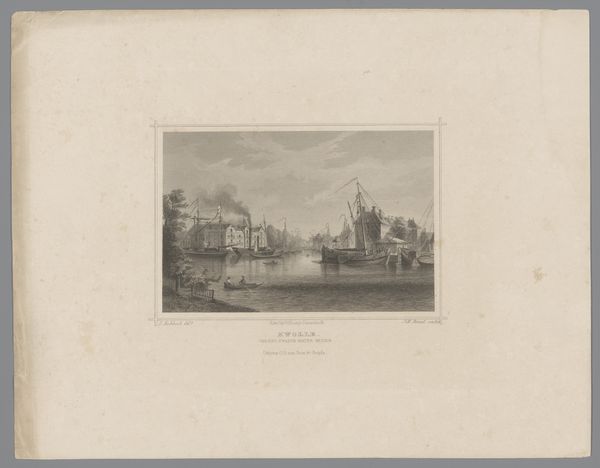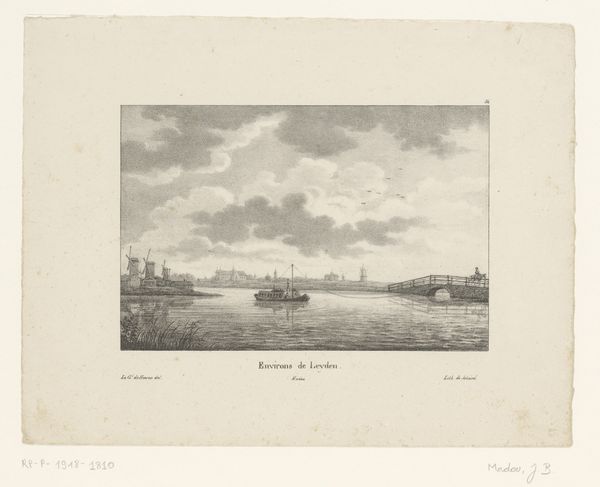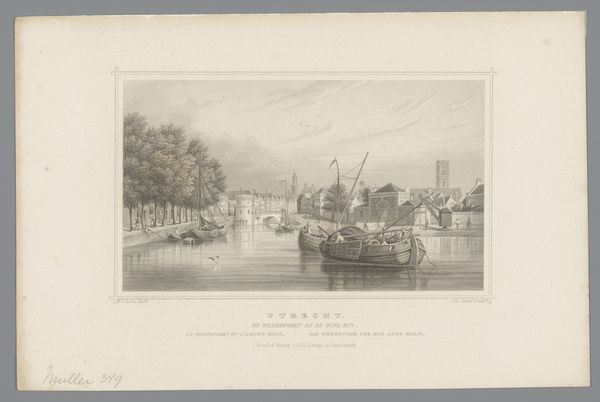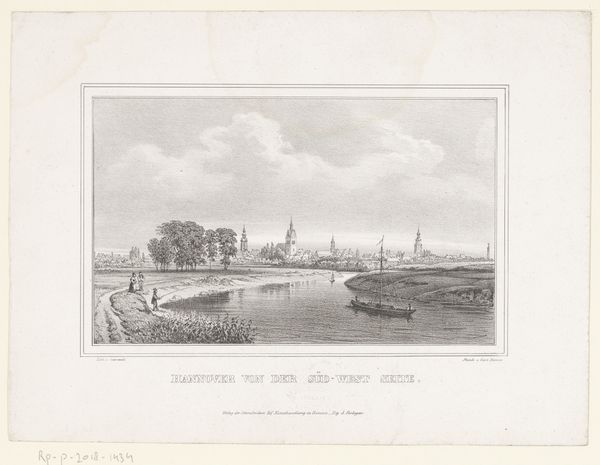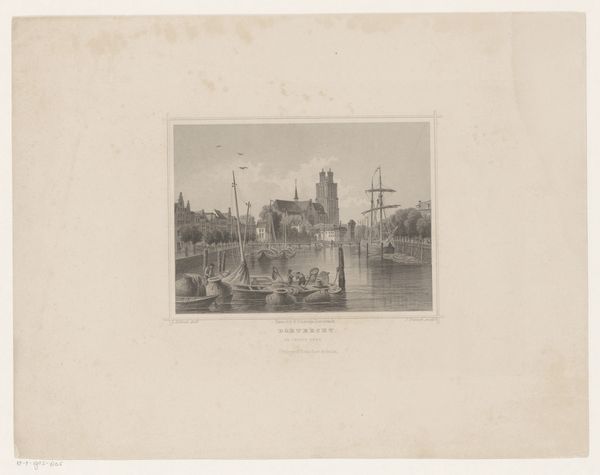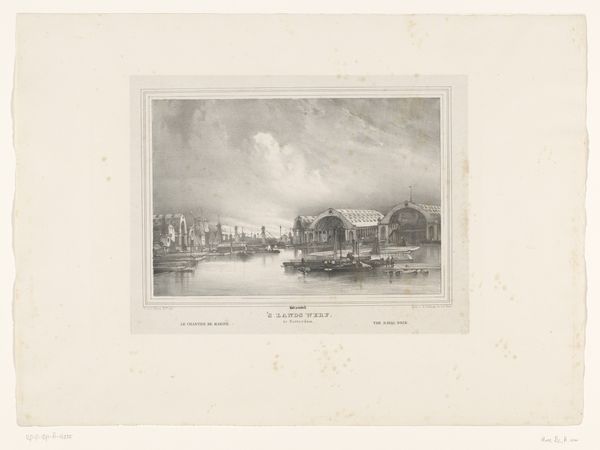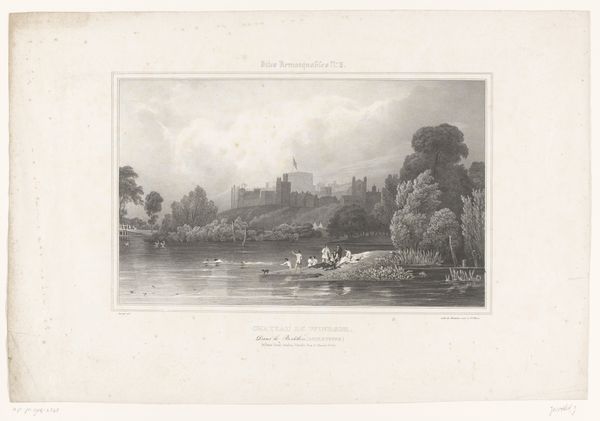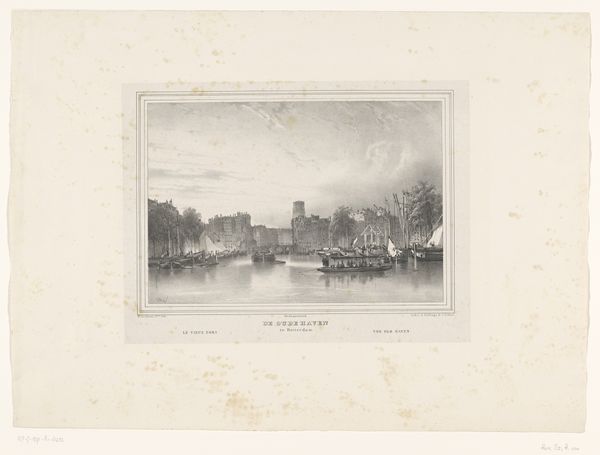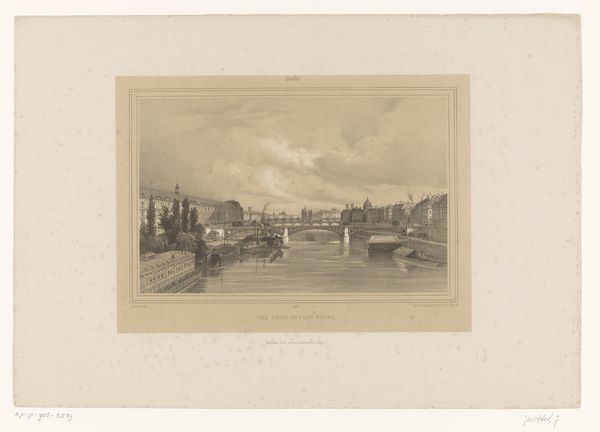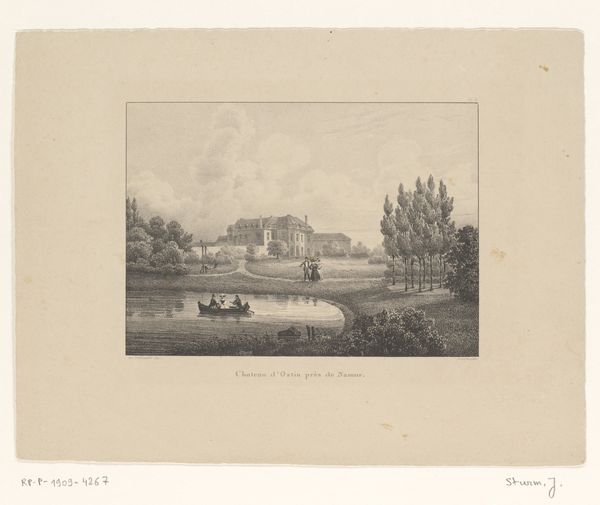
#
aged paper
#
toned paper
#
light pencil work
#
muted colour palette
#
photo restoration
#
light coloured
#
white palette
#
personal sketchbook
#
soft colour palette
#
watercolor
Dimensions: height 254 mm, width 328 mm
Copyright: Rijks Museum: Open Domain
Editor: Here we have Julius Umbach's "Gezicht op Haarlem," created around 1858, employing watercolor. It's giving me a sense of tranquility, a serene snapshot of Haarlem. What do you see in this piece, particularly beyond its immediate aesthetic appeal? Curator: The apparent tranquility you observe, I think, can be further interrogated. How might we understand this depiction of Haarlem within the larger context of 19th-century industrialization and urbanization? Look at the placement of the windmills, these symbols of Dutch industry against the backdrop of what seems to be a fairly quiet town. Consider, too, the waterways as trade routes, and their social function beyond being an attractive element. Is it truly just a picturesque scene, or is there a commentary embedded in it? Editor: That’s an interesting point. It disrupts the idyllic reading, certainly. It makes me think about who this landscape is for. I mean, who benefits from this calm and scenic view, and who maybe doesn’t even have access to this representation of their own city? Curator: Exactly! It also forces us to question whose perspectives are prioritized and rendered visible in art historical narratives. What about the labour that sustains this landscape, the stories absent from the frame? The seeming simplicity invites complex questions around power and representation. Even the muted colour palette subtly steers our perception, doesn't it? Editor: I didn’t think of it that way initially, but now I realize how much richer a “simple” landscape can be. I appreciate how you pointed out the importance of historical context when interpreting these types of works. Curator: It’s about looking beyond the surface, always thinking critically about whose stories are told and, more importantly, whose are omitted. Seeing art this way transforms passive observation into active dialogue.
Comments
No comments
Be the first to comment and join the conversation on the ultimate creative platform.
